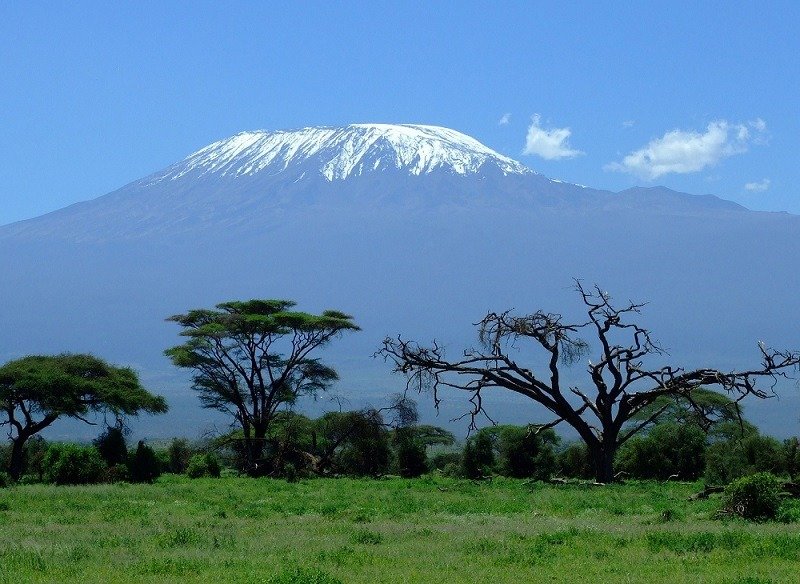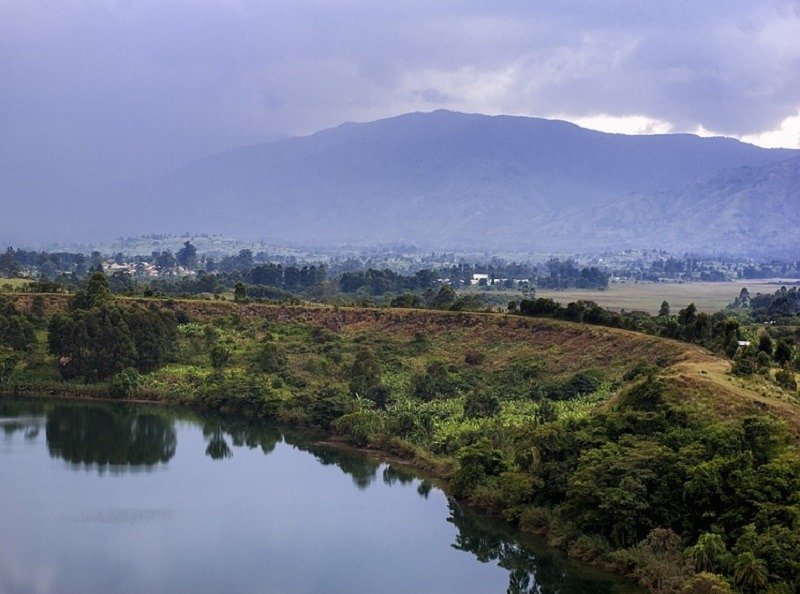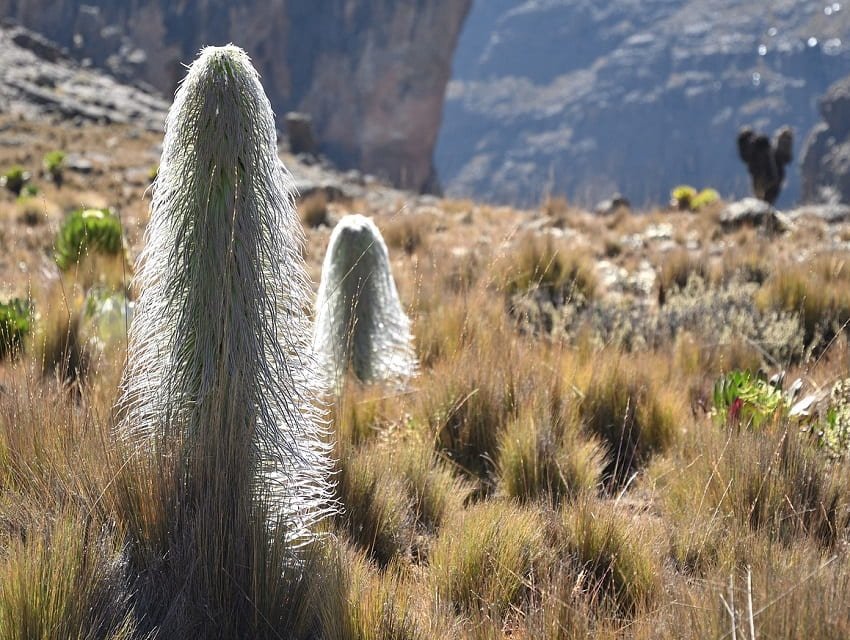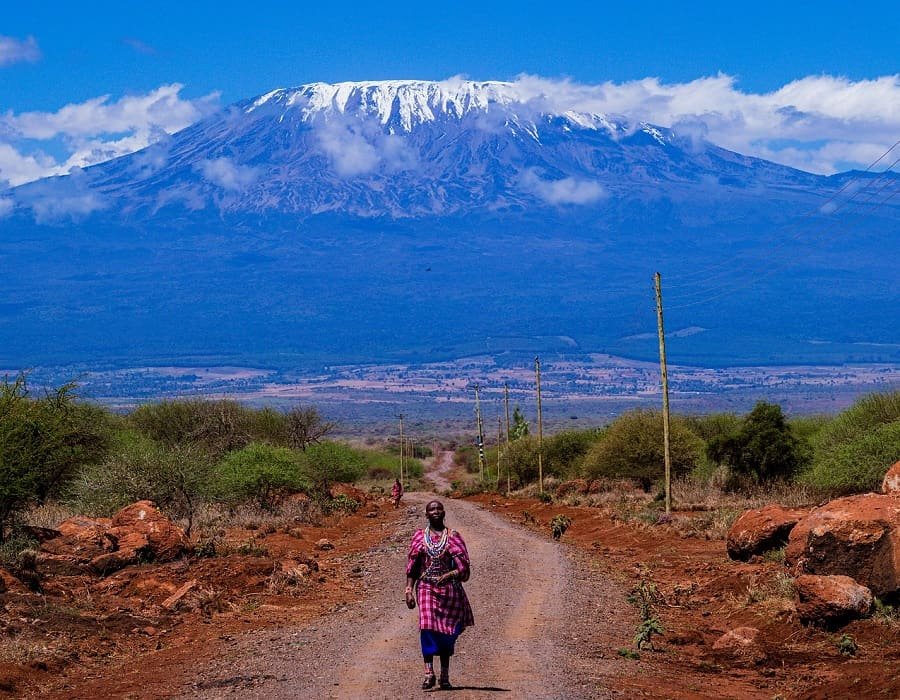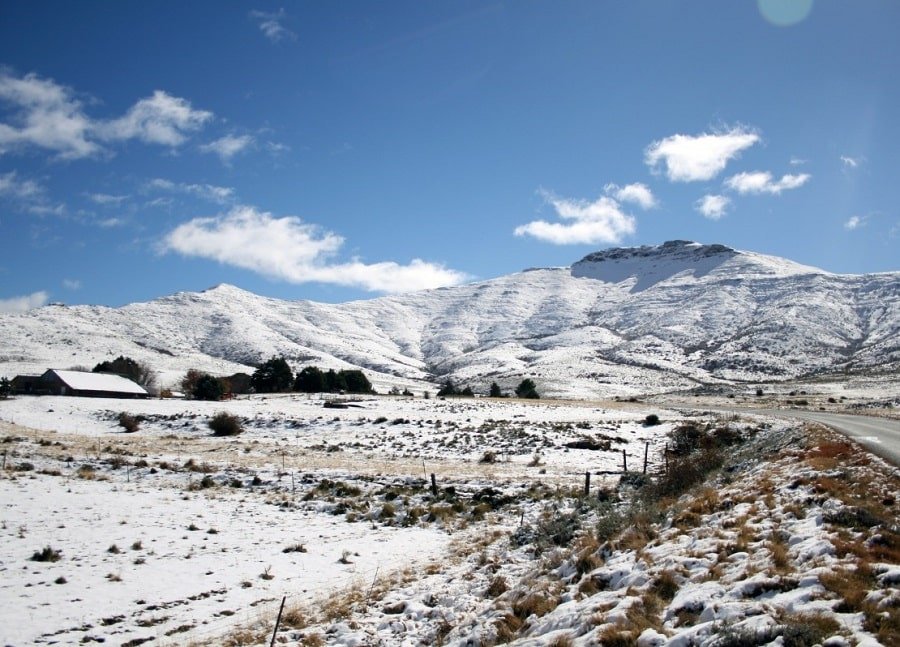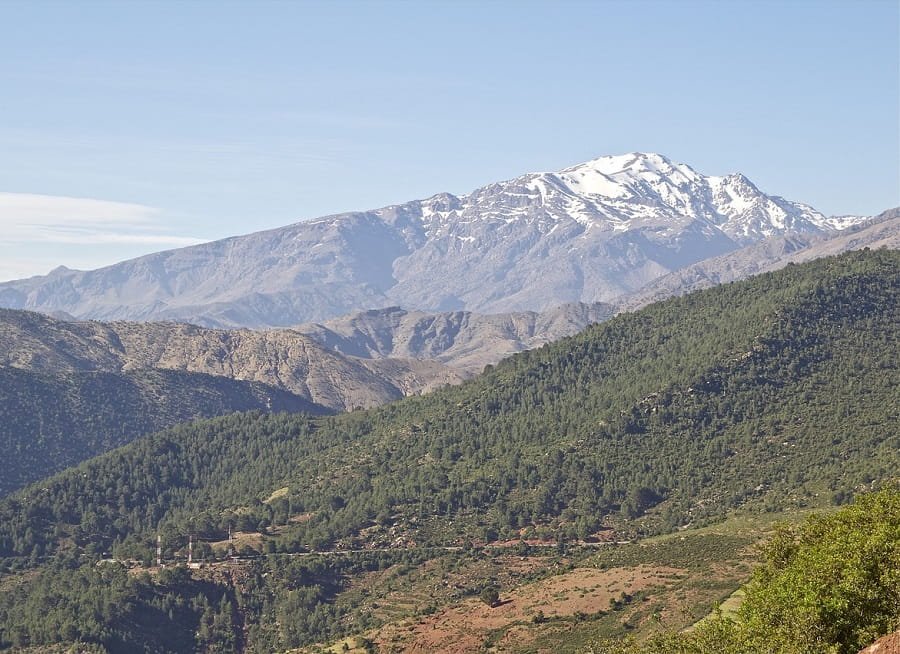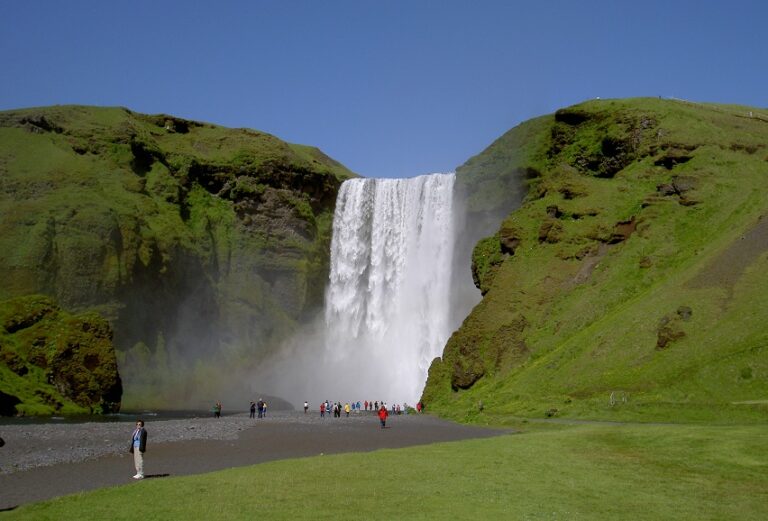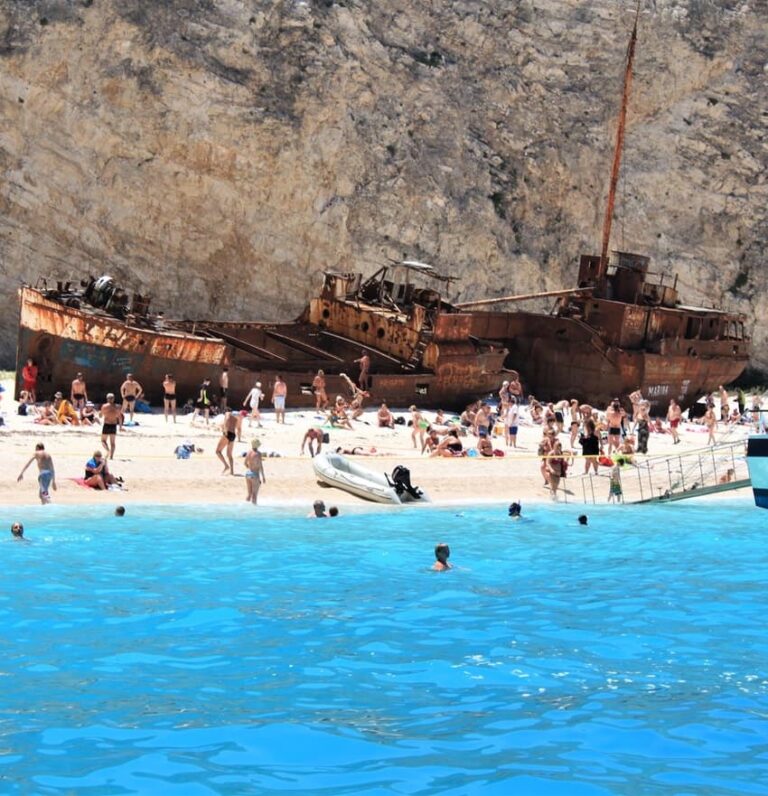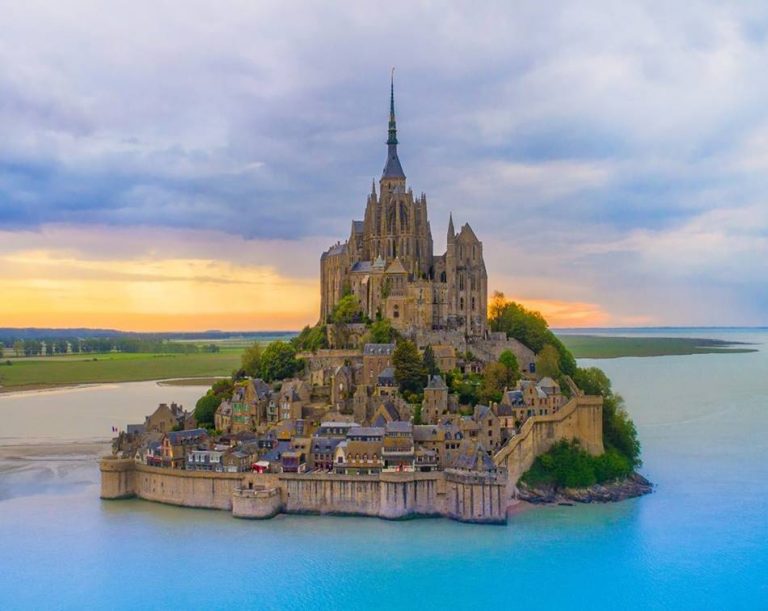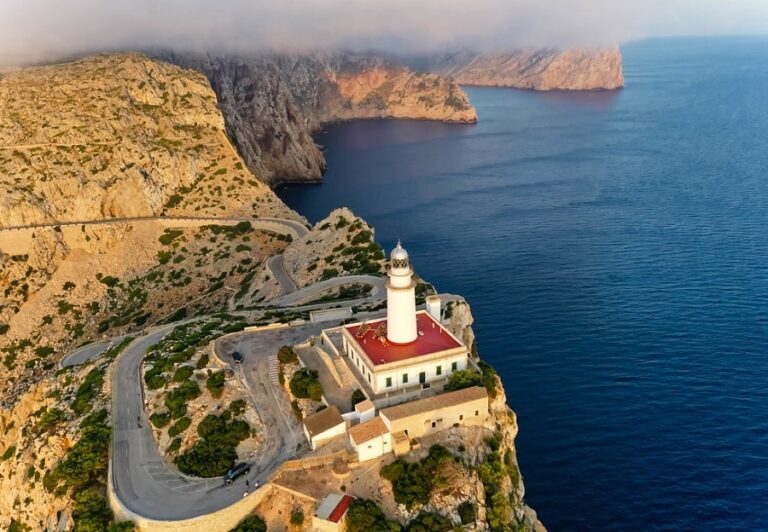Does It Snow in Africa? Winter Wonders of the Africa
Last Updated on 4th July 2023 by admin
Africa is a continent that catches people’s attention because of its unique landscapes, vibrant cultures, and full of wildlife. Many people have questions as to if snowfall ever blesses this wonderful region. which is usually associated with warm temperatures, broad savannahs, and sun-drenched beaches. The answer to the question “Does it snow in Africa?” is explored in this article, along with numerous remarkable examples of when this continent has its own winter wonderland.
Does It Snow in Africa?
Definitely, yes is the answer to the question “Does It Snow in Africa?” Contrary to common opinion, snow does fall in several regions of Africa, creating magical and breathtaking landscape that stands in sharp contrast to the continent’s typical temperature. The large size and varied environment of Africa contribute to a wide diversity of climates, resulting in variable weather conditions throughout the year.
Weather Patterns in Africa
Before delving into the specific regions, it’s important to understand the diverse weather patterns across Africa. The continent experiences a wide range of climates, including tropical, desert, and Mediterranean climates.
Tropical Climate
Africa occupies a majority in the tropics, where warm temperatures and heavy humidity are common. Snow is extremely rare in these regions due to the consistently warm weather throughout the year.
Equatorial rainforests are one of the features that distinguish Africa’s tropical environment. These thick, biodiverse forests lie close to the equator, where throughout the year high temperatures and heavy rains are recorded. The Congo Basin in Central Africa is home to the second-largest rainforest in the world, known as the Congo Rainforest.
Dry and Desert Climate
A significant portion of Africa consists of deserts, such as the Sahara Desert and the Kalahari Desert. These arid regions are characterized by extremely low rainfall and high temperatures, making snowfall almost non-existent.
Sahara Desert spans across northern Africa, covering approximately 3.6 million square miles. It stretches across several countries, including Morocco, Algeria, Tunisia, Libya, Egypt, Mauritania, Mali, Niger, Chad, and Sudan.
Mediterranean Climate
Some coastal regions of Africa, particularly in the northern and southern parts, have a Mediterranean climate. These areas experience mild, wet winters and warm, dry summers. Snowfall is more likely in these regions compared to the tropical or desert climates found elsewhere on the continent.
During this season, temperatures remain relatively mild, rarely dropping below freezing. The Mediterranean Sea acts as a heat reservoir, moderating the temperatures and creating a comfortable environment. The rainy season occurs in the winter, bringing much-needed precipitation to the region.
Snow-Capped Mountains in Africa
When picturing Africa, one might envision vast savannas, dense jungles, or arid deserts. However, Africa is also home to breathtaking snow-capped mountains, offering a striking contrast to its more familiar landscapes. We will explore some of the notable snow-capped peaks in Africa, showcasing the beauty and allure they possess.
The Rwenzori Mountains:
The Rwenzori Mountains, commonly referred to as the Mountains of the Moon, are a breathtaking sight to see and are tucked away in the centre of East Africa. These spectacular mountains, which span the boundary between Uganda and the Democratic Republic of the Congo, have snow-capped summits that tower impressively over the tropical surroundings.
Margherita Peak
The Rwenzori Mountains in East Africa’s Margherita Peak are home to the range’s highest peak, which rises to a stunning elevation of 5,109 metres (16,763 feet) above sea level. This famous peak may be difficult and fascinating to climb, which draws mountaineers from all over the world.
Margherita Peak, the highest summit of East Africa’s Rwenzori Mountains, is a mesmerising location famous for its breathtaking beauty and distinctive characteristics. Despite being close to the equator, one important feature of Margherita Peak is the presence of snow in Africa.
Margherita Peak endures very cold temperatures despite its tropical setting because to its high altitude. As a result of these freezing situations, snow might gather and beautify the gorgeous summit. It is extremely breathtaking to see the snow-capped Margherita Peak against the backdrop of the African landscape.
For mountaineers and explorers willing to experience the wonder of snow in an unexpected atmosphere, Margherita Peak’s snowfall presents a rare chance. Margherita Peak’s ascent entails navigating difficult terrain and variable weather conditions, with careful preparation and mountaineering skills. The reward, though, is unmatched: the opportunity to take in the splendour of snow-covered mountains in Africa.
Unique Alpine Vegetation
The presence of unique alpine vegetation is one of the unique aspects of the Rwenzori Mountains. The high altitude and the influence of the snow contribute to the growth of peculiar plant species, such as giant lobelias and groundsels, which add an ethereal touch to the mountainous landscape.
This incredible alpine vegetation grows in the Afro-Alpine zone, which may be found at altitudes over 3,500 metres (11,500 feet). A wide variety of plant species that have adapted to the severe Rwenzori Mountain environment can be found in this region. The giant lobelias and the groundsels are two of these remarkable plants that stick out.
In addition to its distinctive alpine vegetation, the Rwenzori Mountains in East Africa are known for the snow that covers this unusual habitat. The Afro-Alpine region’s exceptional plant life and snow combine to create an environment of unmatched beauty and contrasts.
Climbers are welcomed by the sight of snow-capped peaks and valleys decorated with a variety of alpine vegetation at high elevations in the Rwenzori Mountains, where the Afro-Alpine zone begins. The already interesting vegetation that survives in these harsh conditions gains a draw from the snowy landscape.
Mount Kilimanjaro
Mount Kilimanjaro, a snow-capped summit in Tanzania, rises over the East African plains and is arguably the most famous and recognisable mountain in the continent of Africa. It rises tall as a symbol of both human endeavour and the power of nature because Mount Kilimanjaro is the tallest mountain in Africa. Kilimanjaro, which rises to a height of 5,895 metres (19,341 feet), draws adventurers and nature lovers from all over the world.
This spectacular peak’s summit is covered in snow, making it breathtaking to see. Kilimanjaro has a number of glaciers and snowfields that enhance its highest slopes despite being close to the equator. Visitors are in awe of the magnificent visual spectacle created by the contrast between the surrounding African scenery and the gleaming white snow.
Climbing Kilimanjaro
The experience of climbing Mount Kilimanjaro is difficult yet rewarding. Climbers pass through many ecological zones throughout their journey, each with its own distinctive flora and wildlife. The trek to Kilimanjaro’s summit is a unique adventure, passing through lush jungles bursting with life and alpine deserts covered with exotic vegetation.
The mountain offers a variety of routes that range in difficulty, giving climbers of all levels of experience alternatives. Popular alternatives include the Marangu, Machame, and Lemosho routes, each of which has distinct viewpoints and difficulties along the way.
The Snow-Capped Summit
It takes remarkable effort to reach Uhuru Peak, which is the highest point on Kilimanjaro. Climbers pass through many different climates before emerging above the clouds to see the mountain’s iconic snow-capped summit. It is quite mesmerising to see the gleaming glaciers set against the backdrop of the African plains.
In the neighbourhood environment, Mount Kilimanjaro’s snow and ice are extremely important. The rivers and streams that are sustained by the glaciers and snowfields serve as an essential water supply for the local flora and fauna. From robust alpine plants to delicate wildflowers that lend pops of colour to the environment, it supports a broad spectrum of plant life.
Sutherland in South Africa
In the vast plains of the Karoo region in South Africa lies Sutherland, a small town known for its astronomy observatories and unexpected snowfall. Situated at an elevation of around 1,450 meters (4,750 feet), Sutherland experiences cold winters that occasionally bring snow to the area. The best time to visit Sutherland for snow is from June to August, the winter months in the Southern Hemisphere. Visitors can enjoy the rare sight of snow-covered landscapes while exploring the town’s astronomical attractions.
The Winter Wonderland of Snowfall
When snowfall graces Sutherland, it paints the town in a blanket of white, turning the landscapes into a magical winter wonderland. The combination of historic Cape Dutch-style buildings, snow-covered streets, and surrounding mountains creates a scene straight out of a fairytale. The charm of Sutherland is amplified during this time, as the unexpected snowfall adds an ethereal touch to the already captivating atmosphere.
Winter Activities in Sutherland
The snowy season in Sutherland opens up a range of exciting winter activities for visitors to enjoy. Whether you’re a snow enthusiast or simply seeking a unique experience, there is something for everyone. Here are some popular activities during the snowy season:
- Snowball fights and snowman building: Embrace your inner child and engage in friendly snowball fights or build whimsical snowmen in the town’s parks or open spaces.
- Sledging and tobogganing: Grab a sled or a toboggan and slide down the snow-covered slopes for an exhilarating adventure.
- Winter hiking and photography: Explore the picturesque landscapes on foot and capture breathtaking photographs of the snow-covered town and surrounding nature.
- Indoor stargazing: Sutherland is renowned for its exceptional stargazing opportunities. After a day of snowy adventures, cozy up indoors and marvel at the celestial wonders visible in the clear winter skies.
The Atlas Mountains
The Atlas Mountains, which spanning Morocco, Algeria, and Tunisia, constitute a spectacular natural landmark that captivates with its natural beauty and rich cultural history. This mountain range, which is frequently covered in snow during the winter, provides a stunning escape from the busy towns and a window into the raw grandeur of Northern Africa.
The High Atlas, Middle Atlas, and Anti-Atlas ranges of the Atlas Mountains are testaments to the Earth’s geological forces. They offer a varied and breathtaking scenery with high peaks, wide valleys, and towering cliffs. The highest summits are covered with snow throughout the winter, turning the area into a winter wonderland.
The nearby rivers and streams receive some of the water from the melting snow, which nourishes the vegetation and maintains a wide range of plant and animal species. The presence of snow provides a delicate balance between the life-sustaining water flowing from the mountains and the dehydrated areas of North Africa.
Toubkal, the Highest Peak
Toubkal, standing tall as the highest peak in North Africa, is a true mountaineer’s dream and a natural gem nestled within the majestic Atlas Mountains. Toubkal attracts adventurers from all over the world with its snow-capped top and spectacular panoramas because it offers a thrilling journey.
Toubkal’s snow-capped summit rises to an amazing height of 4,167 metres (13,671 feet), serving as a beacon of exploration and success. This massive mountain, which is part of Morocco’s High Atlas range, offers climbers who want to climb its breathtaking heights a difficult but rewarding ascent.
Toubkal encourages those looking for an unforgettable journey with its snow-capped peaks, untamed routes, and an atmosphere of adventure. It reflects the spirit of exploration and challenges brave people to experience the rush of climbing the highest peak in North Africa. The summit of Toubkal is a symbol of both human tenacity and nature’s eternal force, leaving a lasting impression on anybody who has the courage to climb to its heights.
Winter Sports in the Atlas
The Atlas Mountains offer an interesting and adventurous playground for outdoor lovers when it comes to winter sports. This spectacular mountain range, which is located in the heart of North Africa, changes into a winter paradise each year, luring tourists to enjoy the thrill of skiing down snow-covered slopes and participating in a variety of other winter activities.
Skiing and Snowboarding:
Many ski resorts in the Atlas Mountains serve both beginner and experienced winter sports fans. These resorts, which stretch from Oukameden to Michlifen, provide well groomed slopes, modern facilities, and stunning mountain vistas. Skiing and snowboarding in the Atlas Mountains provide a unique experience, whether you are gliding down calm slopes or pushing yourself with steep descents.
Snowshoeing and cross-country skiing are excellent options for anyone looking for a more relaxing and immersive winter experience. You can see the untainted beauty of the Atlas Mountains up close by exploring the icy routes that snake across the mountain valleys. You can connect with nature and appreciate the peace of the winter environment while engaging in these activities because they go at a slower pace.
Sledging and Tubing:
Winter fun is not limited to skiers and snowboarders. Sledging and tubing provide exciting alternatives for visitors of all ages. Zooming down snow-covered hills on a sled or inner tube guarantees laughter and thrills, creating cherished memories for families and friends alike.
Mountaineering and Ice Climbing:
For the adventurous souls, the Atlas Mountains offer opportunities for mountaineering and ice climbing. Ascending icy cliffs and frozen waterfalls presents a unique challenge and a chance to test your skills and endurance. Guided by experienced instructors, you can explore the icy realms and experience the exhilaration of conquering frozen heights.
Winter Landscape Photography:
The snow-blanketed landscapes of the Atlas Mountains provide a picturesque setting for photography enthusiasts. Capturing the pristine beauty of the snow-capped peaks, the intricate ice formations, and the play of light and shadow in winter offers a wealth of creative opportunities. From sunrise to sunset, the Atlas Mountains present a canvas for stunning winter photography.
When participating in winter sports in the Atlas Mountains, it is essential to prioritize safety. Dress in appropriate cold-weather gear, follow the instructions of experienced instructors, and be mindful of your abilities and limitations. Adhering to safety guidelines ensures a memorable and incident-free winter sports experience.
Africa’s snow-capped mountains reveal another facet of the continent’s natural wonders. From the Rwenzori Mountains’ unique alpine vegetation to the grandeur of Kilimanjaro’s snow-crowned peak and the Atlas Mountains’ enchanting landscapes, these majestic summits offer a captivating contrast to Africa’s more familiar landscapes. Exploring these mountains allows adventurers to witness the convergence of diverse climates and experience the thrill of standing atop Africa’s icy heights.
Best Time to Experience Snowfall in Africa:
While snowfall in Africa is a rare phenomenon, there are specific times and regions where you can increase your chances of witnessing this magical event. If you’re eager to experience the enchantment of snow-covered landscapes in Africa, here are some of the best times to plan your visit:
- Winter Months: The winter months of June, July, and August offer the highest likelihood of snowfall in certain African regions. As the temperature drops during this season, mountainous areas in countries like Morocco, Algeria, Lesotho, and South Africa may receive snowfall, transforming the landscapes into picturesque winter wonderlands.
- High Elevations: To maximize your chances of encountering snowfall, head to areas with higher elevations. Mountain ranges such as the Atlas Mountains, Drakensberg Mountains, Rwenzori Mountains, and even the peaks of Table Mountain provide ideal conditions for snow to accumulate. These majestic peaks offer breathtaking views and thrilling winter experiences.
- Mediterranean Climates: Regions with Mediterranean climates, such as the coastal areas of Morocco and Algeria, can experience snowfall during colder months. While it is not as common as in mountainous regions, the combination of higher elevation and cooler temperatures can occasionally result in snowfall along the coastal regions.
In conclusion, while Africa is predominantly known for its warm climates and diverse landscapes, the continent also boasts snow-covered wonders that leave visitors awe-struck. From the mighty peaks of Mount Kilimanjaro and the Atlas Mountains to the unexpected snowfalls in places like Ifrane and South Africa, Africa’s winter offerings are as diverse as the cultures that call it home. Embrace the magic of Africa’s snow and embark on a journey that will forever be etched in your memories.

